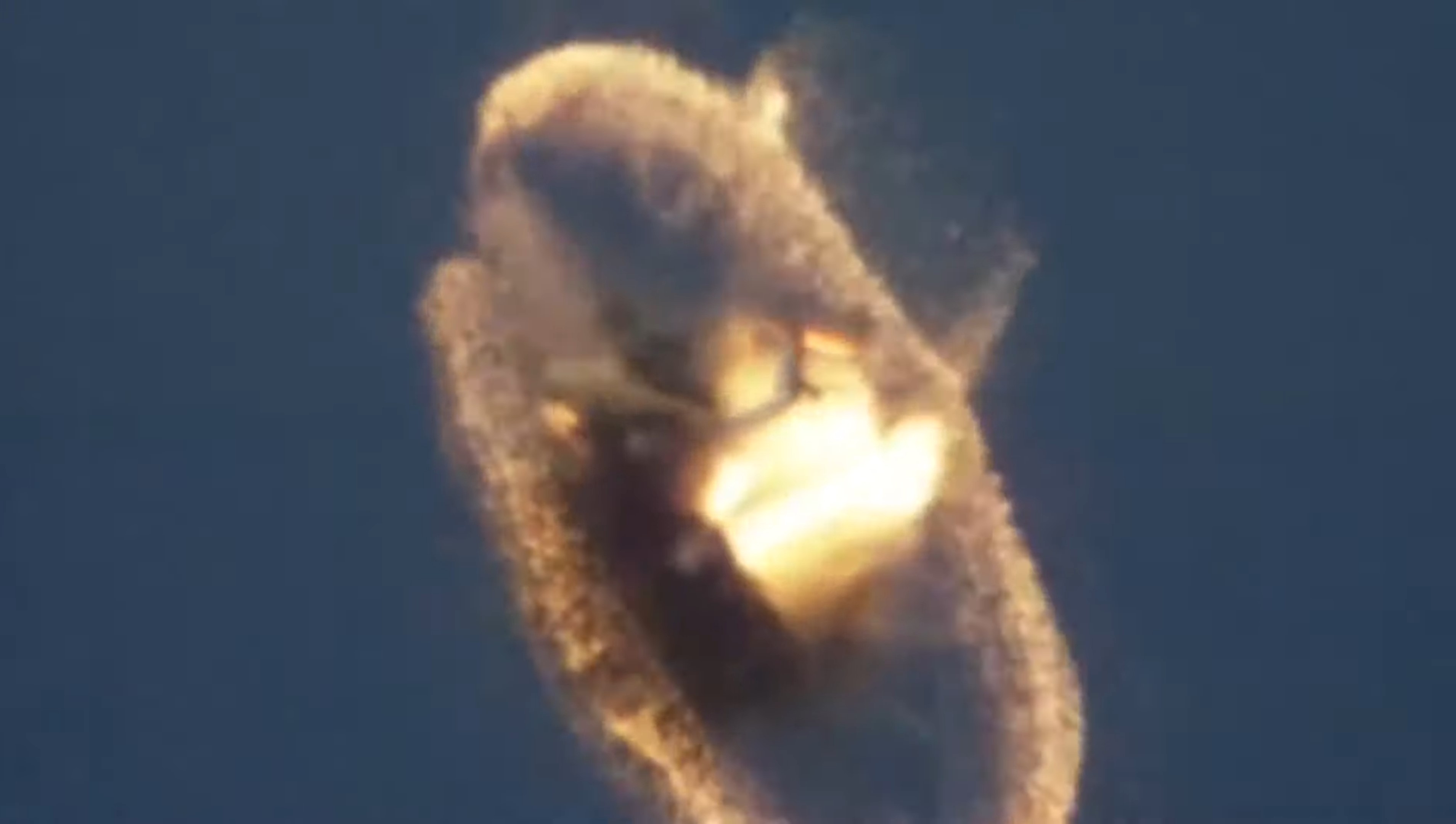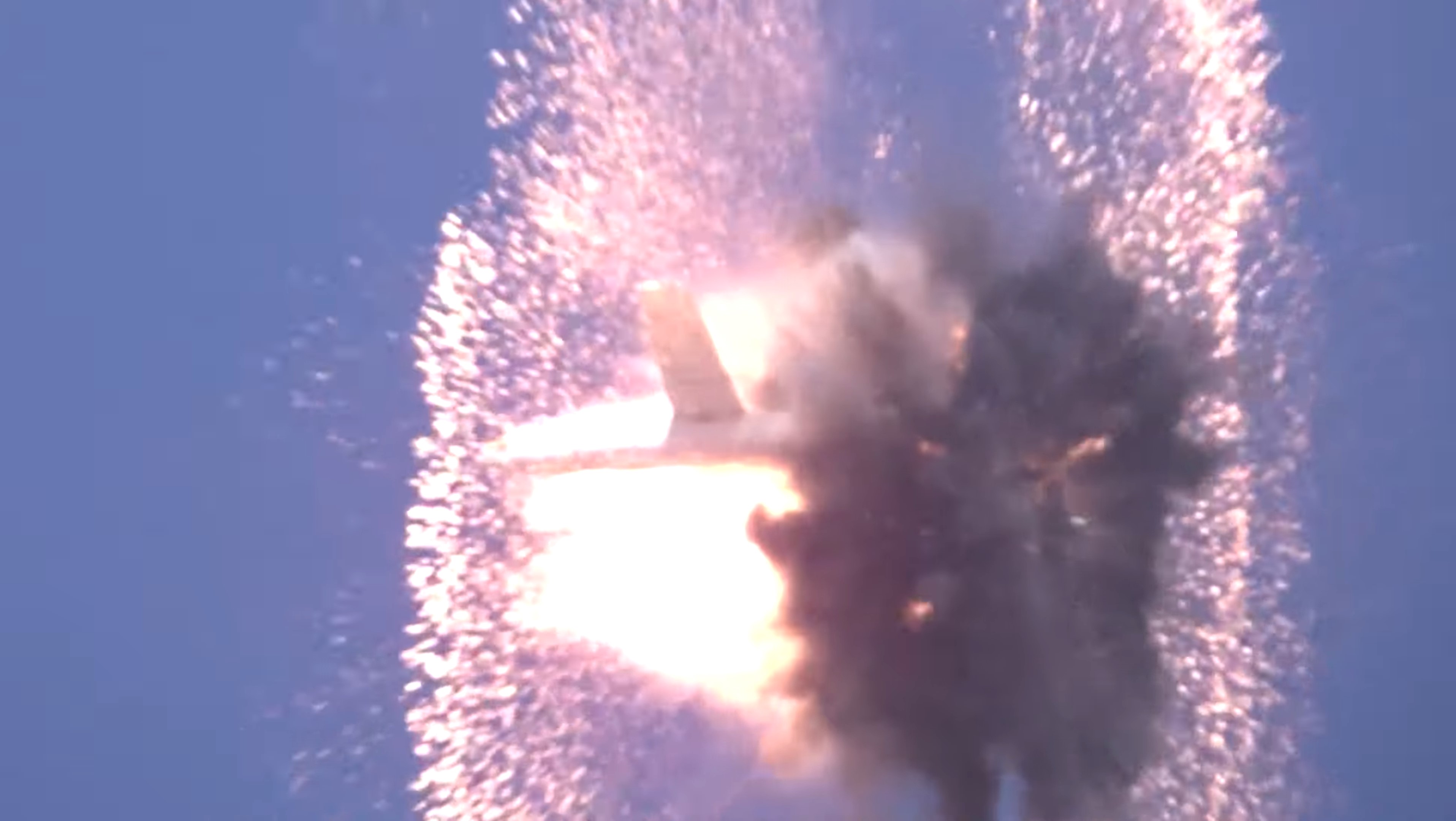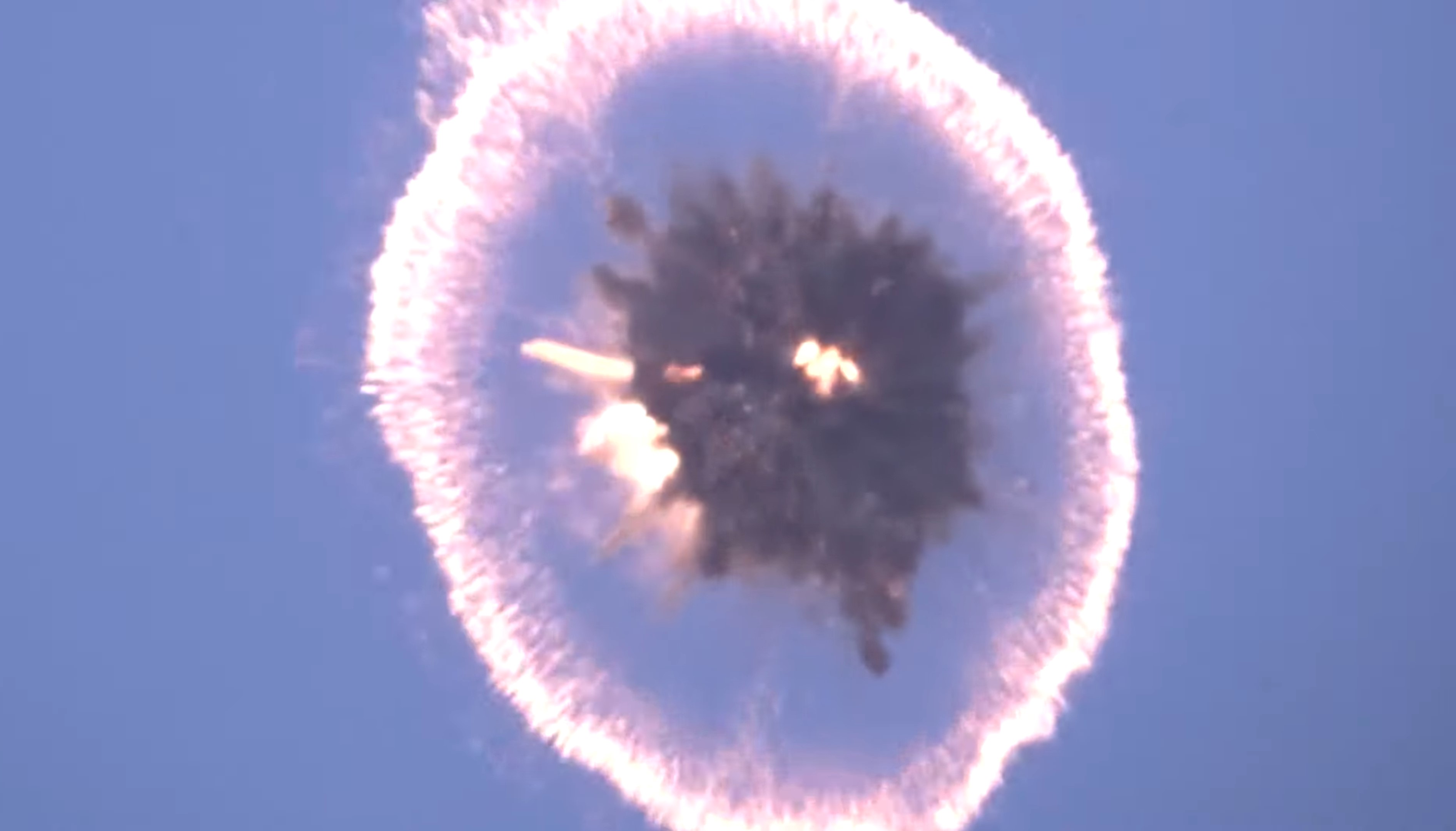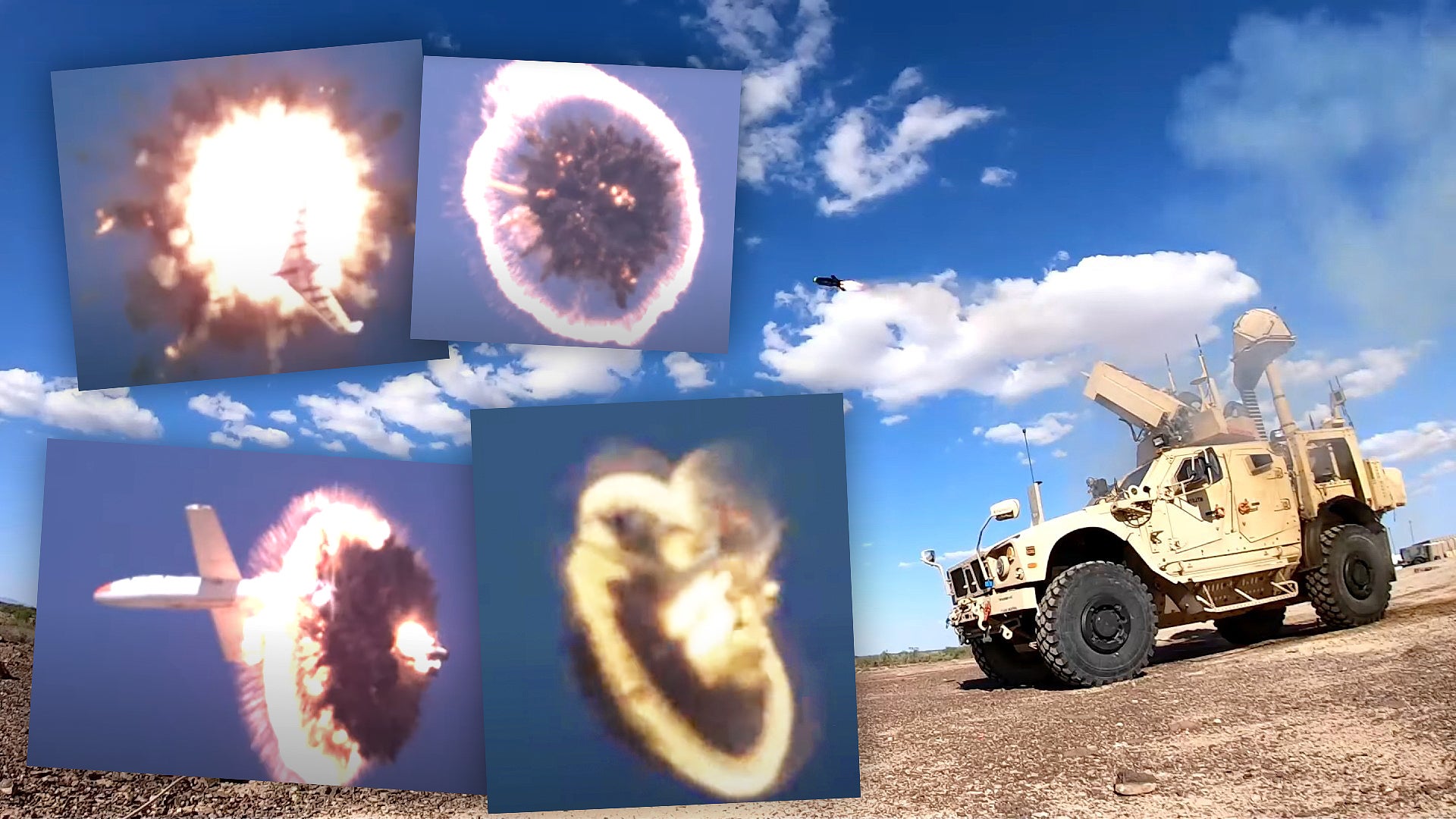Raytheon released incredible new footage today of its Block 2+ Coyote drones engaging a number of unmanned aerial vehicles in a downright impressive undated demonstration. The video shows 4×4 M-ATV-based and fixed palletized launch systems firing the Coyotes, which then spectacularly defeat a variety of fixed-wing unmanned vehicles at different altitudes.

The video, shared to YouTube today, shows the Raytheon Coyotes defeating a number of fixed-wing drones during testing at the U.S. Army’s Yuma Proving Ground in Arizona last year. The blast-fragmentation warheads on the Coyotes explode with a ring-shaped blast pattern radiating out from their longitudinal axis, producing quite the fireworks show. Two of the clips in the 1:40 video feature captions declaring the demonstrations were of a “High Altitude Test” and a “Low Altitude Test.” According to the video’s title, Raytheon claims this system “proves counter-UAS effectiveness against enemy drones.” Another shows a purely hit-to-kill engagement where the Coyote impacts the drone without exploding.

In the description accompanying the video, Raytheon says the demonstrations took place in cooperation with the U.S. Army’s Integrated Fires and Rapid Capabilities Office (IF/RCO) during a “10-day summer test period.” The company stated the Coyotes’ palletized launcher system seen in the footage featured a KuRFS precision targeting radar, while the launcher seen aboard an Army M-ATV-based M-LIDS launcher used a Ku-720 mobile sensing radar system. These fire control systems cue the drones to intercept their targets.
The palletized version seen in the footage would be able to be transported and deployed in forward operating areas or even aboard large ground vehicles or surface vessels, enabling a wide variety of platforms to have their own short-range air defenses.

The Coyote is a small, tube-launched UAV with a flexible launch system capable of being installed on a wide variety of platforms including unmanned underwater vehicles or unmanned surface vehicles. Earlier versions of the Coyotes were propeller-powered and resembled fixed-wing aircraft with pop-out wings and twin tails. These types were intended primarily for intelligence, surveillance, and reconnaissance roles.
The Block 2 Coyotes have a much more missile-like configuration and feature four maneuverable control surfaces in their tail sections. A rocket motor gives these newer Coyotes their initial thrust, after which a small jet turbine takes over. This particular propulsion and control scheme is said to give the Coyote 2s a “dogfight-type of capability” according to Raytheon, making it capable of engaging highly maneuverable targets. A Raytheon spokesperson told The War Zone that the Block 3 Coyotes, meanwhile, feature a more traditional UAV design with wings similar to the original Coyote Block 1.

Some version of the Coyote was forward deployed to an undisclosed location aboard the Marine Corps’ Ground-Based Air Defense (GBAD) Counter-UAS system, which is M-ATV-based, but it’s unclear how widespread its usage has been or if that particular system is still in use. As of June 2021, the Army was planning to send its own M-LIDS featuring the Raytheon Coyote to an unnamed forward location in the U.S. Central Command area of responsibility.
This is particularly interesting given that separate video footage appeared online earlier this week that shows two ‘suicide drones’ being shot down as they approach Ain Al Asad Air Base in Iraq, which hosts U.S. forces. A Centurion Counter-Rocket, Artillery, and Mortar (C-RAM) system, which is armed with a 20mm Vulcan cannon, brings down one of the explosive-laden unmanned aircraft. An unknown physical interceptor explodes near the other drone.
The interceptor in that video footage, seen in the Tweet below, is visible briefly flying at a relatively low speed and with a level flight profile that is very reminiscent of the Coyote’s mode of operation as seen in Raytheon’s newly released footage. The explosive pattern of that unknown interceptor, and the proximity at which it detonates to the target, are also somewhat similar to what we have now seen with regards to the Coyote Block 2+.
While there’s been no official statement that suggests the Coyote was used in this particular interception, the Pentagon has yet to release any details about which system was used in the Al Asad engagement. The War Zone reached out to the U.S.-led coalition fighting ISIS in Iraq and Syria for more information about this incident, but has not yet received a response.

As the footage released by Raytheon today shows, the Coyote is a capable counter-unmanned aerial system (cUAS) platform, making it well suited for the types of engagements seen this week in Iraq. In addition to cUAS roles, the Department of Defense has also envisioned the interceptor drone acting as a loitering munition or “low-cost cruise missile.” The Coyote is also capable of swarming operations and can be equipped with non-kinetic cUAS payloads such as those used in a summer 2021 demonstration at Yuma Proving Ground, also conducted with the Army’s Indirect Fires and Rapid Capabilities Office. It’s unclear if the footage released today was taken at the same demonstration.
The Coyote is quickly proving itself to be a capable platform, able to carry out a variety of mission roles. As for the Coyote Block 2+, we likely we’ll see more of the diminutive jet-powered drones in future deployments given how vital cUAS and short-range air defense systems are becoming to maintaining air superiority.
Contact the author: Brett@TheDrive.com
